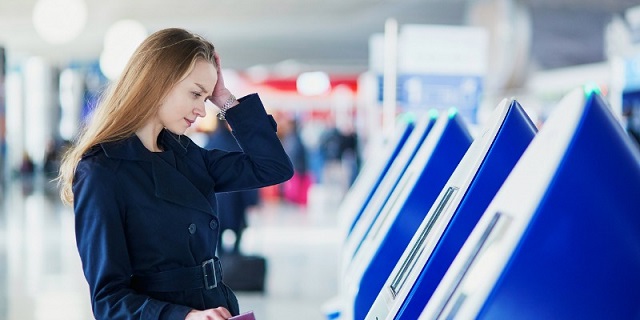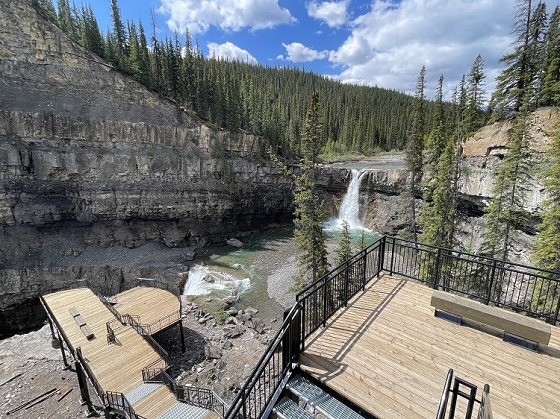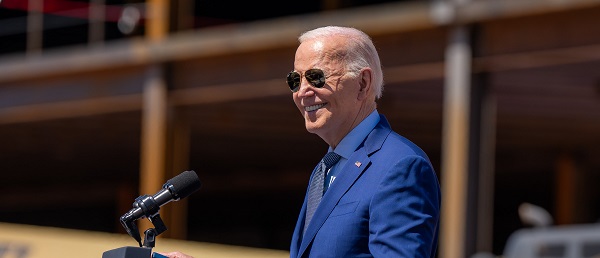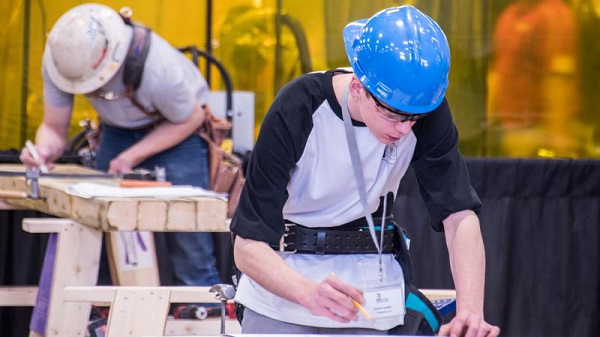Travel
Todayville Travel: Home-Swapping and Hard-Falling In Whistler

I was navigating a black-diamond run at the end of our last day in Whistler. The path dropped through a steep mogul-field then narrowed to a single track in thick forest. I veered hard right through a tiny opening between two Douglas fir trees. I emerged blindly from the dark boughs. Terra firma vanished. I was hurtling off a ten-meter cliff, in free fall.
What was I doing here?
My date with this Whistler precipice had its genesis in – of all places – a golf course in New Zealand. We were teeing it up last March in Nelson, on the South Island, when a fellow-duffer approached us on the first tee. He was solo so Florence and I asked him to join us. He introduced himself as Russ, from Vancouver. We played a pleasant nine holes together, shook hands and parted ways.
“This is just too weird,” said our fellow Canuck. “Let’s have lunch.”
Two weeks later –and a thousand kilometers distant – we were hiking Mount Maunganui, on the North Island. As we arrived huffing and puffing to the summit, there stood Russ and his wife Barb, chatting affably with a fit young Kiwi. We laughed at the coincidence, commented on the fine Austral weather, and moseyed off.
Two weeks distant– and another thousand kilometers removed – we were examining a cross-section of New Zealand’s biggest and oldest tree – a 3000 year-old Kauri – at the aptly named Kauri Museum in the tiny west coast village of Matakohe, when who to my wondering eyes should appear but good old Russ.
“This is just too weird,” said our fellow Canuck. “Let’s have lunch.”
So, over flat-white coffee and whitebait (a hideous Kiwi delicacy consisting of fried egg and a worm-like fish), the four of us sat, laughed and marvelled at the wonders of New Zealand – and our trifecta of coincidental encounters.
The Feehans were – as usual – travelling without reservation, flying by the seat of their pants and scrambling daily for nightly accommodation. Russ and Barb were at the other end of the organizational spectrum. They were happily bunked in just two spots during their entire two-month sojourn to New Zealand. As members of www.homelink.com/ they had exchanged their house in Vancouver for accommodation Down Under.
Russ and Barb travel in a sphere of gratis lodging, swapping their Vancouver abode – and Whistler condo – for digs the world over.
I pondered the merits of our pleasant home in Red Deer and looked at Russ, wondering whether he and Barb might enjoy a holiday in frozen, flat central Alberta. But Russ didn’t look like he’d been born yesterday.
Then I remembered our condo in Kimberley. It’s a great spot in B.C’s lovely Purcell mountains.
And that’s how we ended up in a quaint ski chalet for a week on Nita Lake, in Whistler. In return, Barb and Russ will be golfing and biking the Kootenays for a week in September chez Feehan.

Preparing for a day of skiing at Chez Russ and Barb
We haven’t signed up for Homelink yet – but what a great concept: why leave your home vacant and idle, spending a whack on hotels, when you can swap for free domicile across the pond (or at Whistler)?
My only previous Whistler experience occurred in 1984, and although the 80’s weren’t exactly the 60’s, still I recall very little of that trip. I do remember a wild and crazy Doug and the Slugs concert, performed al fresco in the Whistler Village common. And I recollect that Bill Johnson won the World Cup downhill in 1 minute 54 seconds. (Billy was the quintessential American bad-boy. The great Franz Klammer derisively referred to him as a “nasen-borer”.)
We skied that same downhill run with our friends from Saskatoon in January. It took me just under nine minutes top to bottom – and I cheated, stopping the clock each time I paused to rest my weary legs – or discreetly probe my proboscis.
Whistler is slightly more sophisticated than sleepy Kimberley. Kimberley’s Northstar Mountain has five chairlifts. Whistler and her sister mountain Blackcomb have 37, including the incredible Peak 2 Peak gondola that spans 4.4 kilometers and whisks skiers between the two resorts in a matter of minutes. When completed a few years ago it was the longest and highest lift in the world.

Peak 2 Peak Gondola
The lift capacity at Whistler/Blackcomb is an unimaginable 65,507 skiers per hour. At that rate the entire population of Red Deer could be boosted to the top of the mountain in about an hour and a half.

Gerry’s Volkls (front right) stacked amongst hundreds of other skis
Snow conditions throughout B.C. have been great this year. Each day tens of thousands of stoked skiers shared Whistler’s terrain with us. The 2010 Olympics ended nearly 9 years ago, but the party carries on. The hills and streets echo with languages and accents from around the globe.

The Olympics ended almost nine years ago but the Whistler party carries on
Our Saskatchewan friends, Joe and Carla, are gung ho: first in line for the 8:30 a.m. gondola opening and last down the hill for après ski festivities. They frequent the blue runs (easily logging over 20,000 vertical feet in a day). I enjoy these cruising runs but find I lack speed restraint – and my aging bones aren’t up for a high-velocity crash. My new passion is tree skiing, a slower but more rewarding, methodical way of descending the hill.
And that’s how my encounter with the Whistler precipice happened.
Arcing headfirst, I careened down the snowy cliff-face, employed an unintended somersault and landed flat in the middle of a cat track. I lay still, a puddled mess, piecing together the previous few moments of existence.
Miraculously, I was unscathed. My skis and poles were jammed part way up the cliff, deeply scathed. I climbed up, retrieved my battered equipment and tentatively skied down to the chairlift where my Saskatoon acquaintances awaited. It was they who had suggested I might enjoy that treacherous black trail.
“How was the run?” asked Joe.
“I wouldn’t recommend it,” I said, emptying snow from inside my goggles.
That night we relaxed in front of a roaring fire, enjoying the view across Nita Lake and the glowing mansions fronting Whistler.

The foggy daytime view across Nita Lake
In the morning we bid adieu to our prairie friends and our Whistler digs, packed the Subaru and, avoiding the congested Vancouver corridor, took an alternate route home, north up Hwy 99 through Pemberton and down the narrow, perilous pass into Lillooet and thence back onto Hwy 1 at Kamloops. En route I had a rather close call with a cliff. But that’s another story.

Hwy 99 North through Pemberton and Lillooet is spectacular and avoids busy Vancouver
Gerry Feehan QC practised law in Red Deer for 27 years before starting his second life as a freelance travel writer and photographer. He says that, while being a lawyer is more remunerative than travel writing, it isn’t nearly as much fun. When not on the road, Gerry and his wife Florence live in Red Deer and Kimberley, BC. Todayville is proud to work with Gerry to re-publish some of his most compelling stories from his vast catalogue developed over more than a decade of travel.

Gerry Feehan
Click to read an excellent story about the Turks and Caicos or Hana Hawaii
Business
Here’s why your plane ticket is so expensive

From the Fraser Institute
By Alex Whalen and Jake Fuss
While the strike by WestJet mechanics lasted only a few days, many Canadian air travellers faced long delays and cancelled flights. More broadly, according to the Canadian Transportation Agency, customer complaints have hit an all-time high.
Yet many dissatisfied travellers likely don’t realize that Ottawa heavily contributes to their frustrations. Let’s look at the various ways federal policies and laws make air travel worse in Canada.
First, federal laws insulate Canada’s airlines from competition. Foreign airlines are subject to highly restrictive “cabotage” laws which, for example, dictate that foreign airlines cannot operate routes between Canadian cities. At the same time, foreign investors are forbidden from owning more than 49 per cent of Canadian airlines. By restricting international participation in the Canadian air travel market, these laws both deprive Canadian consumers of choice and insulate incumbent airlines from competition. When consumers have more choice, incumbents have a greater incentive to improve performance to keep pace with their competitors.
Second, a wide array of taxes and fees heavily influence the cost of airline tickets in Canada. Airport improvement fees, for example, average $32.20 per departing passenger at airports in Canada’s 10 largest markets. In contrast, airport improvement fees in the United States cannot exceed $4.50. And last year the Trudeau government increased the “air travellers security charge” by 32.85 per cent—this fee, which now ranges from $9.94 to $34.82 per flight, is higher in Canada than the U.S. across all flight categories. On the tax front, in addition to fuel taxes including the federal carbon tax, the federal excise tax on unleaded aviation gasoline in Canada is 10 cents per litre compared to 6.9 cents per litre in the U.S. And the U.S., unlike Canada, does not apply sales taxes to aviation fuel.
Third, air travel is a heavily regulated sector. Federal legislation generates thousands of provisions airlines must follow to operate legally in Canada. Of course, some regulation is necessary to ensure passenger safety, but each regulation adds administrative and compliance costs, which ultimately affect ticket prices. To lower the cost of air travel, the federal government should reduce the regulatory burden while maintaining safety standards.
Lastly, the ownership model of Canada’s airports results in a yearly transfer of rent to the federal government. The federal government used to own Canada’s national system of airports until they were transferred to private not-for-profit corporations in the early 1990s. However, these airports must still pay rent to the federal government—nearly half a billion dollars annually, according to the Canada Airports Council. As with the other examples listed above, these costs are ultimately passed on to consumers in the form of higher ticket prices.
While a precise estimate is difficult to obtain, various government policies, taxes and fees comprise a large share of the cost of each airline ticket sold in Canada. With complaints from travellers at all-time highs, the federal government should reduce the regulatory burden, increase competition, and lower fees and taxes. Policy reform for air travel in Canada is long overdue.
Authors:
Alberta
Just in time for Canada Day weekend! Crescent Falls ready to be enjoyed again

The new staircase structure and viewing platform are among many upgrades that visitors can look forward to at the reopening Crescent Falls Provincial Recreation Area. (Credit: Alberta Parks).
The popular Crescent Falls Provincial Recreation Area reopens following a significant capital investment to improve visitor safety and experiences.
Crescent Falls Provincial Recreation Area is ready to welcome visitors back to enjoy one of the most remarkable, accessible waterfall viewing opportunities in Alberta. The upgrades at Crescent Falls will help improve the park’s visitor experience. Guests can expect expanded parking, improved access roads, trails and day use areas, new and improved viewing areas to take in the falls and upgraded safety measures, including signage and wayfinding.
The Provincial Recreation Area (PRA) is reopening over the July long weekend after being closed since 2023. Visitors will notice increased public safety upgrades through additions such as new parking lots, a new stair structure to access the lower falls, new pedestrian trails, a new vehicle bridge to access the camping area and a viewing platform to enjoy the Crescent Falls.
“We are thrilled to welcome visitors back to Crescent Falls Provincial Recreation Area in time for the Canada Day long weekend. These additions will help visitors to safely access and enjoy the area’s natural beauty. Parks are for people and Alberta’s government will continue to invest in high-quality outdoor recreation opportunities.”
“Today marks a significant milestone for our community as we reopen the Crescent Falls Provincial Recreation Area following extensive upgrades. Our province is well known for its incredible natural beauty, and these improvements will make our backcountry more accessible and ensure that Albertans and those visiting our great province can continue to explore our stunning landscapes for years to come.”
-

 Daily Caller2 days ago
Daily Caller2 days agoBiden Administration Was Secretly More Involved In Ukraine Than It Let On, Investigation Reveals
-

 Business2 days ago
Business2 days agoTrump says ‘nicer,’ ‘kinder’ tariffs will generate federal revenue
-

 2025 Federal Election2 days ago
2025 Federal Election2 days agoPM Carney’s Candidate Paul Chiang Steps Down After RCMP Confirms Probe Into “Bounty” Comments
-

 Business2 days ago
Business2 days agoBiden’s Greenhouse Gas ‘Greendoggle’ Slush Fund Is Unraveling
-

 2025 Federal Election2 days ago
2025 Federal Election2 days agoPoilievre, Conservatives receive election endorsement from large Canadian trade union
-

 2025 Federal Election2 days ago
2025 Federal Election2 days agoLiberal MP Paul Chiang Resigns Without Naming the Real Threat—The CCP
-

 2025 Federal Election2 days ago
2025 Federal Election2 days agoFight against carbon taxes not over yet
-

 2025 Federal Election1 day ago
2025 Federal Election1 day agoMark Carney refuses to clarify 2022 remarks accusing the Freedom Convoy of ‘sedition’












